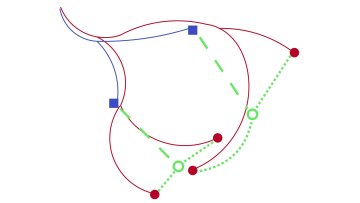Mathematics for the mind: network dynamical systems for neurodegenerative disease pathology
Travis Thompson
Can mathematics understand neurodegenerative diseases? The modern medical perspective on neurological diseases has evolved, slowly, since the 20th century but recent breakthroughs in medical imaging have quickly transformed medicine into a quantitative science. Today, mathematical modeling and scientific computing allow us to go farther than observation alone. With the help of computing, experimental and data-informed mathematical models are leading to new clinical insights into how neurodegenerative diseases, such as Alzheimer's disease, may develop in the human brain. In this talk, I will overview my work in the construction, analysis and solution of data and clinically-driven mathematical models related to AD pathology. We will see that mathematical modeling and scientific computing are indeed indispensible for cultivating a data-informed understanding of the brain, AD and for developing potential treatments.
___________________________________________________________________________________________________
Simplified battery models via homogenisation
Robert Timms
Lithium-ion batteries (LIBs) are one of the most popular forms of energy storage for many modern devices, with applications ranging from portable electronics to electric vehicles. Improving both the performance and lifetime of LIBs by design changes that increase capacity, reduce losses and delay degradation effects is a key engineering challenge. Mathematical modelling is an invaluable tool for tackling this challenge: accurate and efficient models play a key role in the design, management, and safe operation of batteries. Models of batteries span many length scales, ranging from atomistic models that may be used to predict the rate of diffusion of lithium within the active material particles that make up the electrodes, right through to models that describe the behaviour of the thousands of cells that make up a battery pack in an electric vehicle. Homogenisation can be used to “bridge the gap” between these disparate length scales, and allows us to develop computationally efficient models suitable for optimising cell design.


